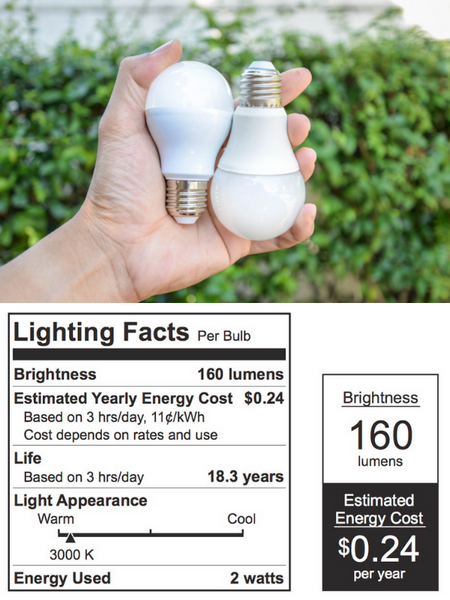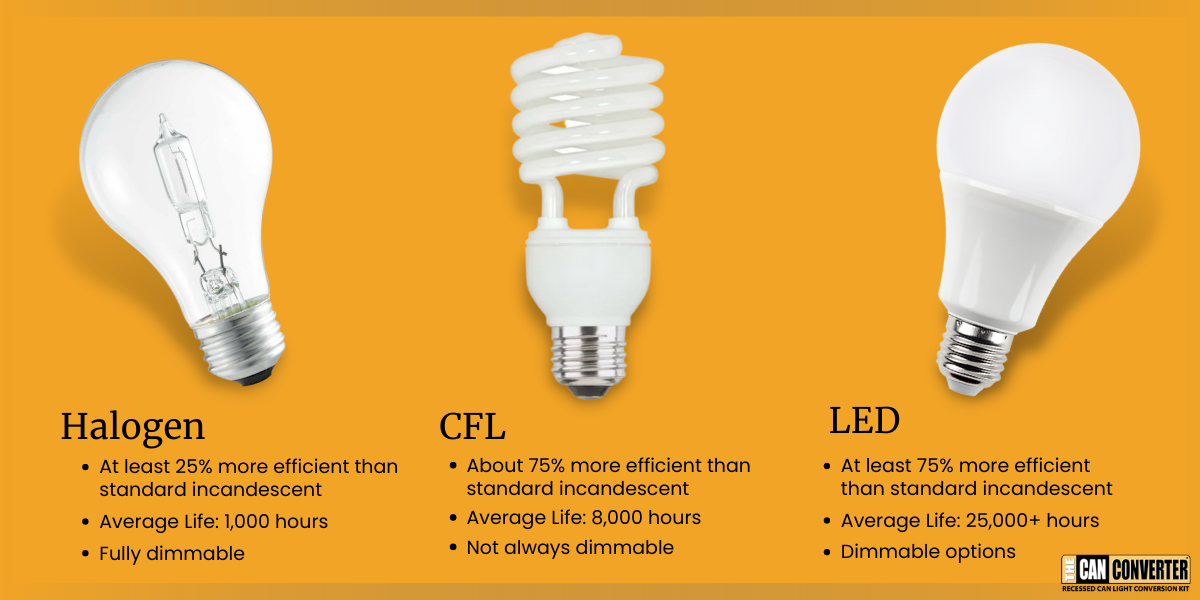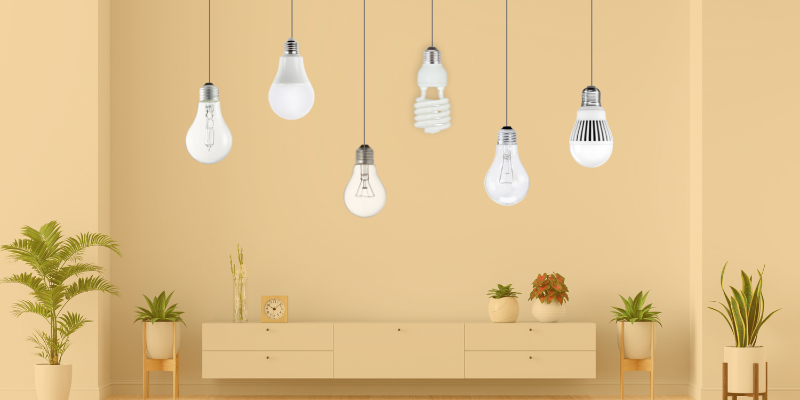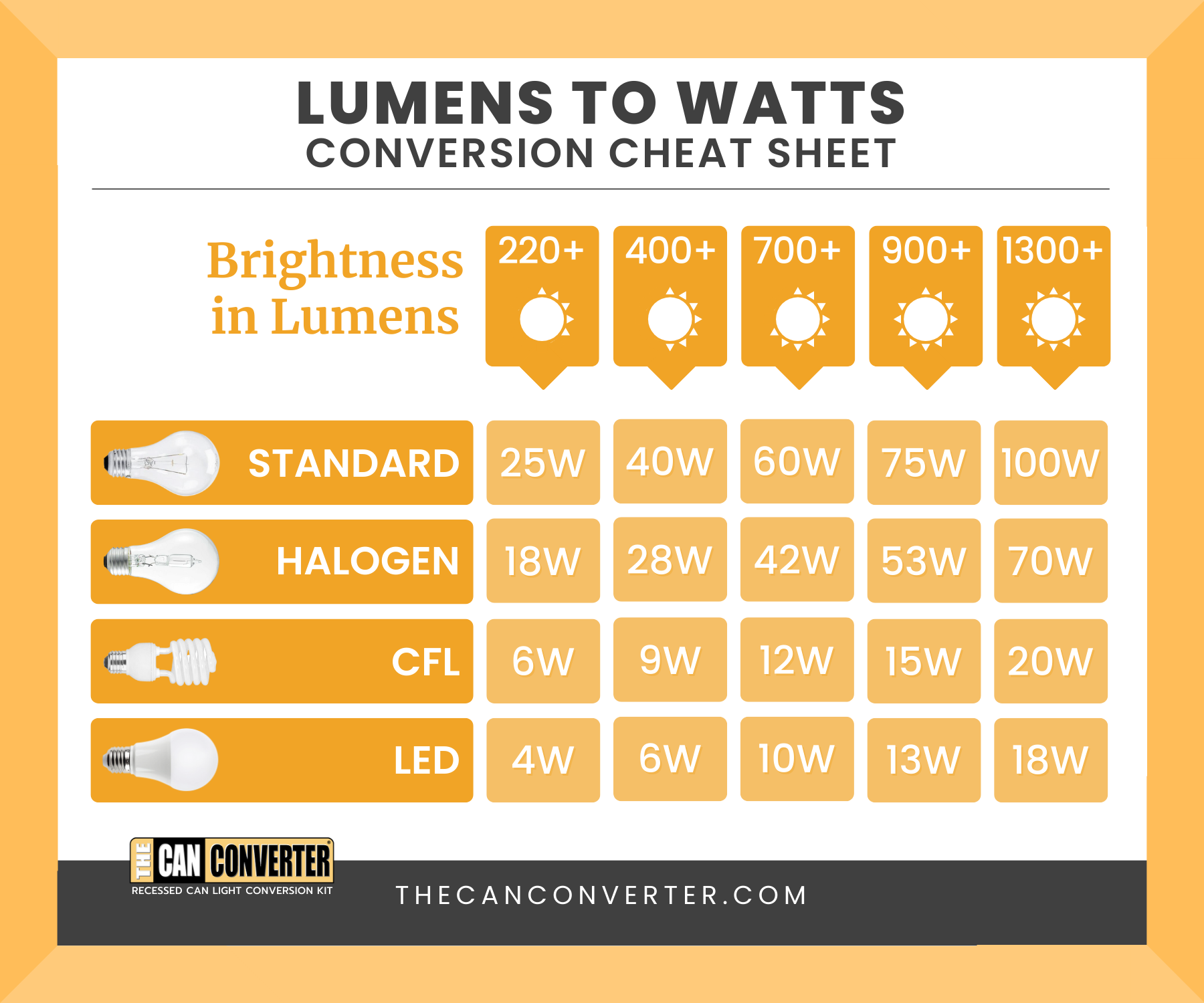Lumens vs Watts
For years, the standard measure of brightness for bulbs was wattage. As the number of watts went up, so did the brightness. For example, a 40W light bulb was always dimmer than a 60W light bulb. But wattage only measures how much energy a bulb uses—not the amount of light it emits. So when energy-efficient lighting, such as CFL and LED bulbs, came along, measuring brightness with watts no longer made sense.
A 2W LED bulb, for example, would have sounded like a very dim light. But when you convert watts to lumens, you’ll find that a 2W LED is actually just as bright as a 25W incandescent bulb. But figuring out how to do a lumens to watts conversion when you’re shopping for new light bulbs isn’t always easy. If still aren’t quite sure how to convert lumens to watts—or watts to lumens—you are not alone. But we’re here to help! We’ll break it all down for you so that it’s easier to understand. Plus, our handy lumens to watts conversion chart will help you easily convert lumens to watts the next time you need to buy light bulbs for your home lighting.
What are watts?
Watts do not measure brightness. They are a unit of power that measures how much electricity is required to achieve a certain level of brightness. With standard incandescent bulbs, the wattage and the luminosity of a bulb would increase at about the same rate. But now, there are different lumens to watts ratios to consider—CFL, LED, and halogen, as well as incandescent bulbs. This means that a bulb’s wattage is no longer a good indication of how bright the light is. For that, you’ll need lumens.

What are lumens?
Lumens measure the total amount of visible light emitted from a source. The higher the number of lumens, the brighter the light. Lumens is an industry standard that allows you to compare the brightness of any bulb, whether it’s an LED, a CFL, a halogen, or an incandescent. When comparing lumens to watts, consider an incandescent bulb that uses 100 watts of power produces about 1,500 – 1,700 lumens. But energy-efficient light bulbs use less wattage than incandescent bulbs. To achieve the same number of lumens as a 100 watt incandescent bulb, a 1500 lumens LED light will use just 13 watts of power! So, as you can see, using lumens to measure brightness, can help ensure you’re comparing apples to apples when choosing your next light bulb, whether it’s for an updated kitchen lighting design or a desk lamp.
Do watts still matter?
Lumens and watts are both important. The lumens will, of course, tell you the brightness of a bulb. But you might also need to know the wattage if you want to install a dimmer switch where the manufacturer has specified a maximum wattage. Many light fixtures, such as those found in some ceiling fans, will also have limits on the bulb wattage they can handle so understanding the lumens to watts conversion can be very helpful. Also, both the lumens and watts of a light bulb are required to calculate the lumens per watt, which tells you how energy-efficient the bulb is. For example, a 60W incandescent bulb produces about 800 lumens. To get the lumens per watt, you divide the lumens (800) by the watts (60), which is about 13.3 lm/W (lumens per watt). On the other hand, a 10W LED that emits 800 lumens would have a lumens per watt of 80 lm/W. Each watt of power used by the 10W LED produces 80 lumens. That means the LED bulb is more than six times as efficient, needing less than 6 watts of energy to produce the same number of lumens as the traditional 60W bulb.

Common energy-efficient bulb options to consider
Learn to Convert Lumens to Watts
With an increasing number of states banning incandescent light bulbs, there are more energy-efficient bulb options available than ever before. So, is there a secret to doing a lumens to watts conversion? Well, no. It’s really more just about getting used to a new way of measuring. Sure, we could tell you that the luminous flux ΦV in lumens (lm) equals the power P in watts (W) multiplied by the luminous efficacy η in lumens per watt (lm/W) — or even simplify that to say that Lumens = Watts (W) × Lumens per watt (lm/W), but we think you’ll find it easier to just use our handy lumens to watts conversion chart!
Using the chart, we can easily compare lumens to watts to help with a wide variety of light bulb replacement needs. For example, if you want to replace a 60W incandescent light bulb with a CFL bulb, you can see that you’ll need a 12W CFL. Or, if you want to replace your 70W halogen light bulb with a more modern LED, you’ll need an 18W LED. In either example, you can see that the number of lumens is the most important factor.
Please note, lighting technology is constantly evolving so some of the wattages shown here may eventually become outdated. However, as long as you remember to match the number of lumens output, you’ll be fine.
It might take some time to get the hang of using lumens to watts, but in the end, we think you’ll agree that lumens are more accurate and using them makes much more sense. So, the next time you shop for light bulbs, forget about watts and look for lumens. And if you have any trouble converting watts to lumens, just refer to our handy lumens to watts conversion chart to help you select the type of bulb and number of lumens that’s right for you!
Now that you have the lumens to watts conversion figured out, it’s a great time to learn how easy it is to use our recessed light conversion kit to update your old can lights into anything from pendant lights to ceiling fans! Need inspiration? Check out our Before & After image gallery. If you’ve already used our product to complete your own recessed light conversion project, we’d love to see your photos too! You can even enter them into our Project of the Month Contest for an opportunity to win a cash prize of $50!



